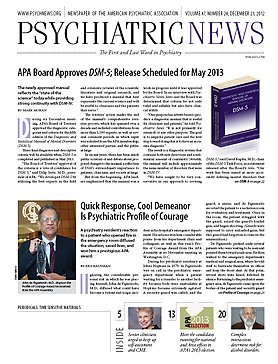In August, Eli Lilly announced that its investigational Alzheimer’s disease (AD) drug solanezumab, an antibody, produced disappointing results in two phase 3 studies. In September, bapineuzumab proved to be another antibody that did not work in large phase 3 trials, announced Johnson & Johnson and Pfizer. Both antibodies bind to amyloid beta protein and cause them to be removed by immune cells. These results have led to doubts about the long-held theory that amyloid beta is the key culprit in AD.
However, additional analysis on pooled data suggested that solanezumab provided small but statistically significant efficacy in slowing cognitive decline in patients with mild disease. The news has fueled the hypothesis that removing amyloid beta might be beneficial if intervention is given early, before clinical symptoms can be observed. Several upcoming prevention studies are about to test this theory.
The Dominantly Inherited Alzheimer’s Network Trials Unit (DIAN TU) at Washington University School of Medicine in St. Louis will begin a prevention trial in early 2013. The researchers will test three drugs targeting amyloid beta in people with inherited mutations that are known to cause early-onset Alzheimer’s disease when people are in their 30s or 40s. Two of the drugs selected for the trial are Roche’s gantenerumab, another antiamyloid beta antibody, and solanezumab. A third drug is an unnamed small molecule beta-secretase inhibitor, also owned by Lilly.
Beta-secretase is an enzyme involved in the production of amyloid beta from precursor proteins. Inhibiting the enzyme may prevent the formation of amyloid plaque.
The DIAN researchers plan to enroll 160 people with the mutations and 80 people without the mutations, according to an announcement in October. Volunteers will be randomized to receive one of four possible treatments—three drugs and placebo—for two years. If one or more of these drugs seem effective in slowing or stopping the development of AD, the study may be expanded or extended.
Another prevention study will be conducted by Banner Alzheimer’s Institute in approximately 300 related people in Colombia who carry a rare genetic mutation that will lead to AD around age 45.
Genetech’s investigational drug crenezumab, also an amyloid beta–clearing antibody, will be tested for its ability to stave off AD occurrence. With funding from Genetech, the National Institutes of Health, and other sources, the $100 million trial will run for up to five years.
Other Drugs, Theories Being Developed
TTP488 is an antagonist of the receptor for advanced glycation endproducts (RAGE), being developed by TransTech Pharma based in North Carolina. A recent phase 2b clinical trial, sponsored by Pfizer and conducted by the Alzheimer’s Disease Cooperative Study consortium, showed that TTP488 performed better than placebo in slowing cognitive decline in patients with mild to moderate AD over 18 months.
Pfizer had terminated the trial before its planned completion due to concerns about toxicity, according to TransTech, which claimed that the drug appeared safe at a lower dose.
The theory is that amyloid beta interacts with RAGE on the blood-brain barrier, neuronal cells, and/or microglial cells, which facilitates plaque formation.
A competing hypothesis for AD pathology is the tau tangle theory, in which the tau protein aggregates into tangles and causes spreading abnormality in the brain. Singapore-based TauRx Therapeutics announced in late October that it had begun two phase 3 clinical trials on its drug LMTX, which is derived from methylene blue and inhibits tau protein aggregation and dissolves tau tangles and its precursors, according to TauRx. The phase 3 trials will evaluate the safety and efficacy of LMTX in more than 1,300 patients with mild to moderate AD over 12 to 18 months.
Another anti-tau drug, epithilone D, is entering phase 1 clinical trials by Bristol-Myers Squibb. Epithilone D, discovered by University of Pennsylvania researchers, has been shown to stabilize microtubules in cells and prevent tau tangle formation in animal studies.
Brain Stimulations Enter the Scene
Transcranial magnetic stimulation (TMS) and deep brain stimulation (DBS) may provide new benefits to AD patients before scientists disentangle the roles of amyloid, tau, and various receptors in the brain.
Neuronix, an Israeli company, announced in late September that its TMS device significantly improved cognitive function in patients with mild to moderate AD, based on data from 12 patients in an ongoing trial at Harvard Medical School–Beth Israel Deaconess Medical Center. The treatment consisted of TMS application for one hour, five days a week, for six weeks. The magnetic pulses are given while the patient performs computer-based exercises related to memory and learning functions. Neuronix announced that it plans to seek FDA approval for the device in the next few years.
Functional Neuromodulation, a Canadian company, is conducting a study on patients with mild AD in the United States and Canada. Continuous electrical stimulation is applied to the fornix, a bundle of neural fibers that connect the hippocampus and hypothalamus. A previous small study showed increased neuronal connectivity in memory circuits after one year of stimulation. ■
